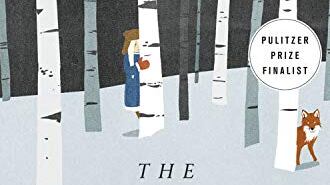The Snow Child, Eowyn Ivey
Eowyn Ivey's beloved debut novel, The Snow Child, sets magical realism in the harshness of winter. Born out of a Russian fairy tale, a drifting couple is brought together by a strange child who appears the day after a snow replica is built in a moment of joy. Neither the couple nor the reader knows if the child is real or imagined, only that she bears the weight of the mythology projected onto her.
Weather, Jenny Offill
Even if Jenny Offill's Weather reads like dry dread—it is, after all, about an impending climate apocalypse—it is only 200 pages, so the foreboding lasts for only so long. Her narrator, Lizzie, is wry and sardonic, breaking down climate anxiety to its most basic parts. For the subject matter, the book is conversational and charming, declining to virtue signal and instead easing into its grim reality feet first.
A Sand County Almanac, Aldo Leopold
People tend to read A Sand County Almanac around Earth Day, and for good reason. Aldo Leopold is a conservationist in all the senses that matter, calling for personal responsibility to the natural world with prose that stands in for an ecological valentine. The chapters move seasonally, beginning with the new year thaw that comes after midwinter blizzards: "January observation can be almost as simple and peaceful as snow, and almost as continuous as cold," he writes. "There is time not only to see who has done what, but to speculate why."
Winter, Ali Smith
The winter installment of Ali Smith's quartet of seasonal novels begins with the holidays, but warns that holiday fuzz is absent. As with all of Smith's writing, the things that are bleak are always more interesting than the things that are shiny: At Christmastime, four people travel to a baronial mansion in Cornwall, split along lines of politics, memory and familial spite. "That's what winter is," Smith writes. "An exercise in remembering how to still yourself then how to come pliantly back to life again."
Sisters, Daisy Johnson
Sororal ties are at the fore of Daisy Johnson's debut novel, a gothic pressure cooker that begins in exile. Two sisters, September and July, are brought to a cottage at the edge of the North York Moors, left in isolation on the barren coast. The great reveal of what would place the pair in such a situation comes to the patient reader who is willing to muscle through sparse dialogue and atmospheric discomfort.

